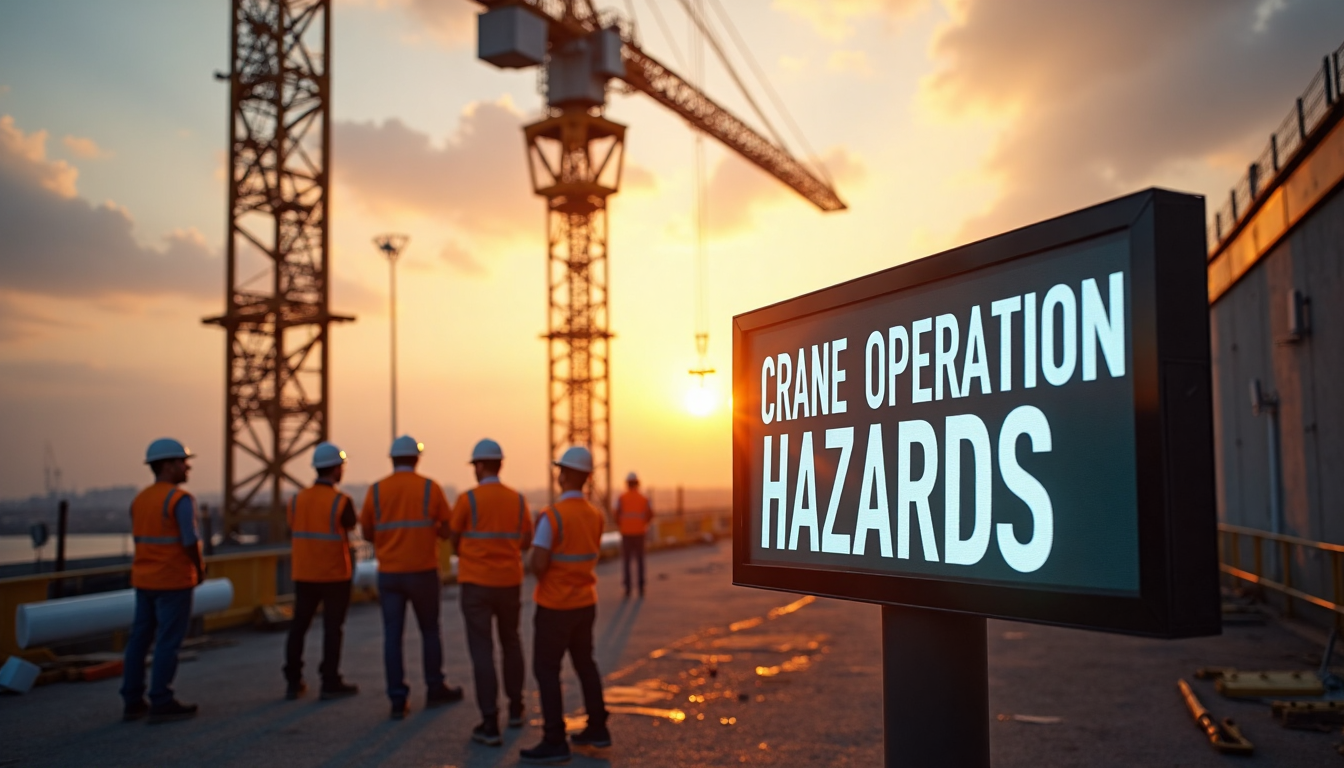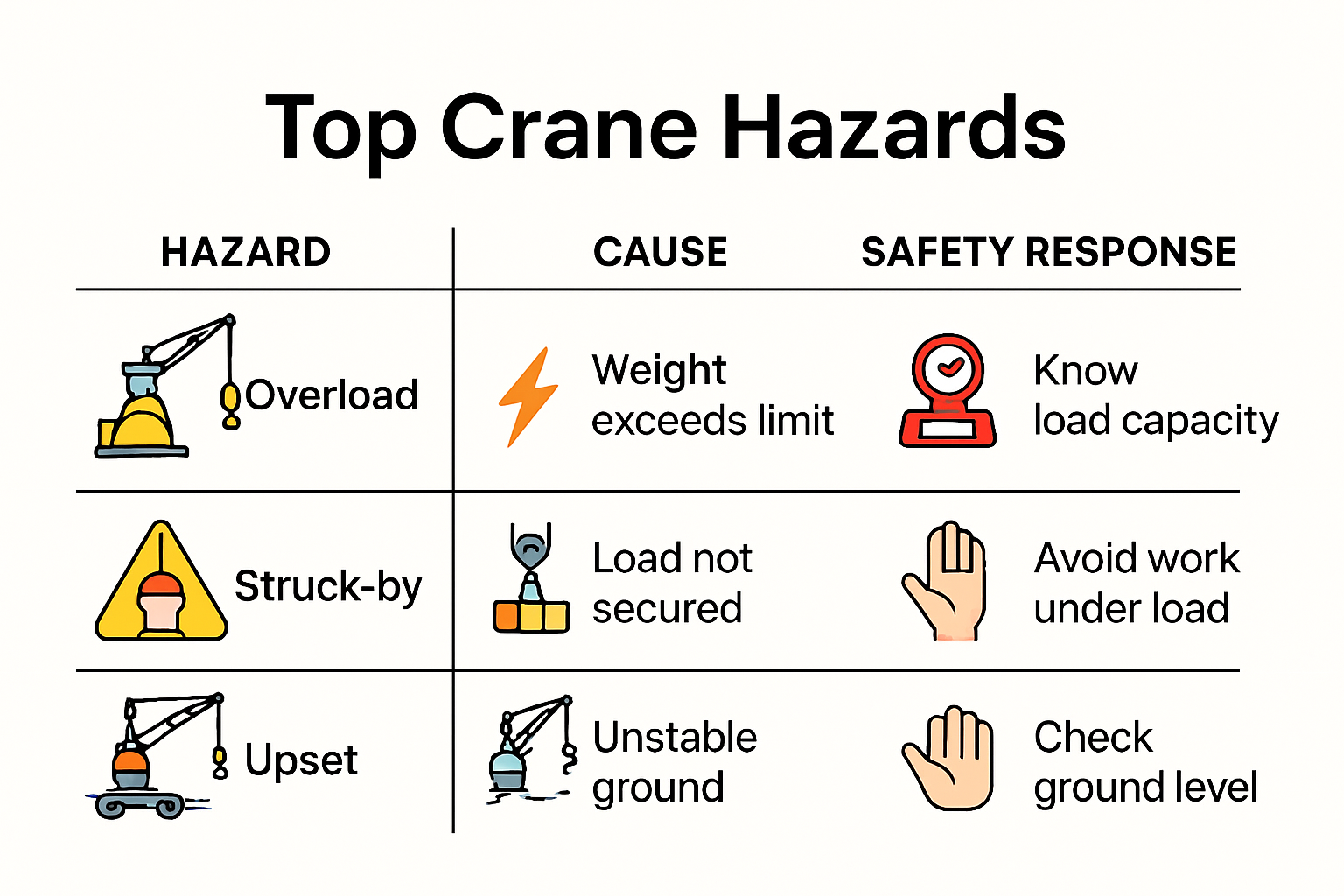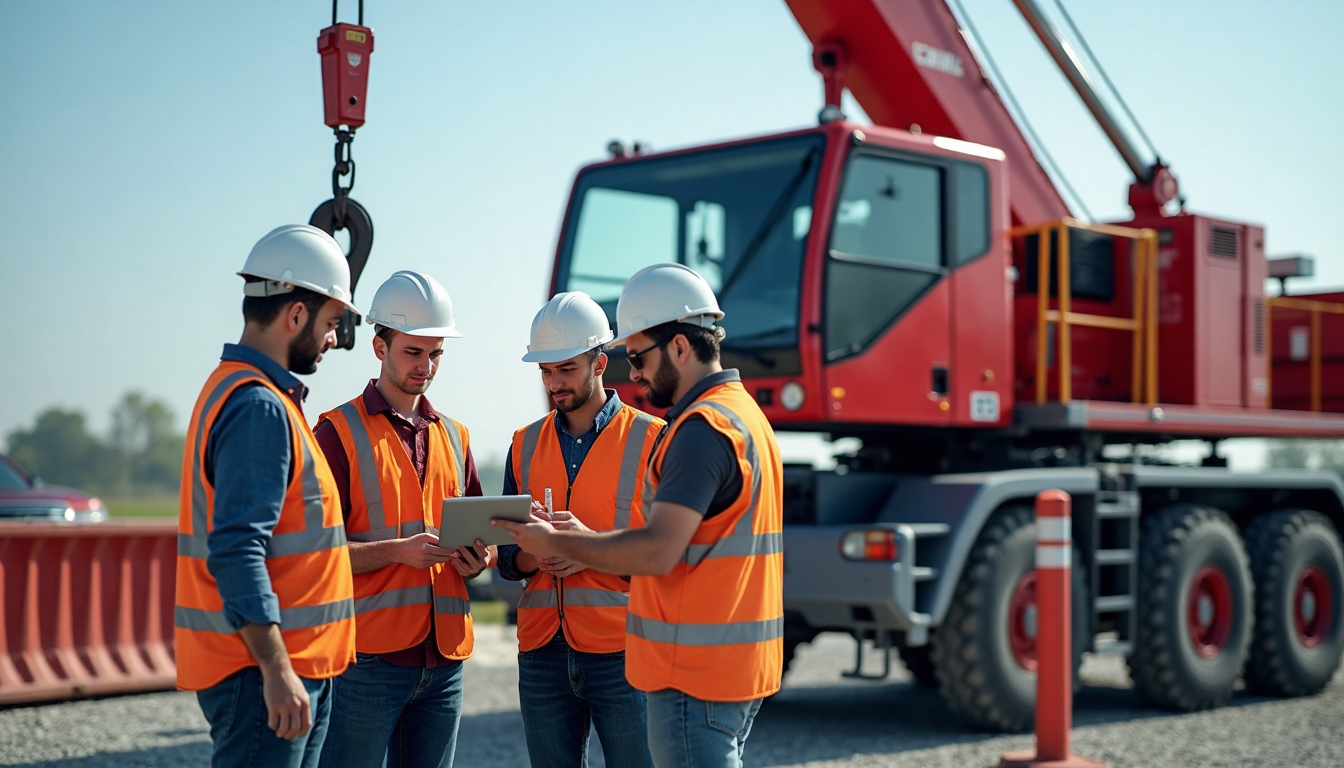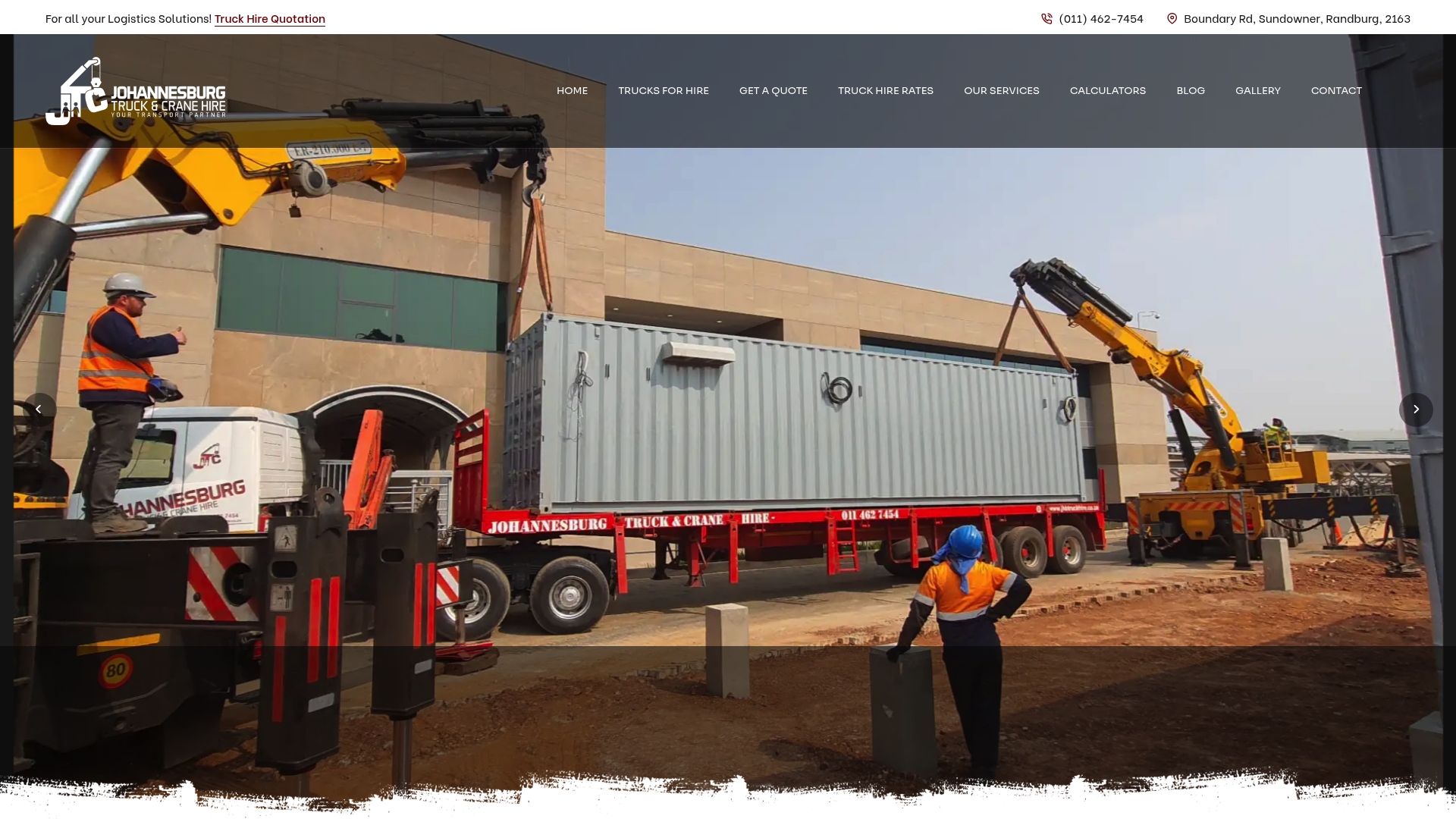
Crane operations carry a heavy burden in the world’s largest industries. Here is something that might surprise you. Construction sites experience up to 2 crane-related fatalities every single week according to national labor statistics. Yet most people overlook that the biggest risks extend far beyond obvious dangers like equipment failure. New hazards are emerging from unexpected places such as psychological health issues and digital compliance gaps as we move into 2025.
Common Crane Operation Hazards In Major Industries
Electrical And Structural Interaction Risks
Load Management And Worker Protection
Training And Technological Interventions
Essential Safety Measures For Crane Operators
Medical And Professional Fitness Standards
Technical Compliance And Equipment Validation
Continuous Training And Technological Integration
Industry-Specific Risks And How To Prevent Them
Construction And Infrastructure Challenges
Mining And Heavy Industrial Environments
Renewable Energy And Precision Sectors
Latest Compliance Updates And Best Practices 2025
Regulatory Framework Transformation
Technological Compliance And Documentation
Lifting Machine And Equipment Standards
| Takeaway | Explanation |
|---|---|
| Electrical and Structural Interaction Risks | Close proximity to power lines can lead to fatal electrocution risks. Operators must adhere to load charts and perform thorough pre-operational inspections to prevent structural failures due to overloading and inadequate maintenance. |
| Comprehensive Load Management | Proper load management is vital to prevent falling objects, requiring rigorous equipment inspections, secure load attachment protocols, and establishing worker exclusion zones around lifting operations. |
| Continuous Training and Technological Integration | Regular certification programs, including simulation-based training for emergency scenarios, are essential. Embracing advanced technologies alongside traditional skills is crucial for safe crane operations across sectors. |
| Industry-Specific Risk Management | Different industries such as construction, mining, and renewable energy have unique crane operation hazards. Tailored safety strategies addressing environmental factors and equipment needs are necessary for effective risk mitigation. |
| Regulatory Compliance Updates | The 2025 regulatory updates emphasize enhanced safety measures, including mental health considerations and stricter compliance for equipment testing and documentation, necessitating organizations to adopt a proactive safety culture. |

 Crane operations represent a critical yet high-risk component across multiple industrial sectors. The complexity of crane usage demands rigorous safety protocols and comprehensive understanding of potential operational hazards. Professionals working with mobile cranes must recognize and proactively mitigate risks to ensure workplace safety and prevent catastrophic incidents.
Crane operations represent a critical yet high-risk component across multiple industrial sectors. The complexity of crane usage demands rigorous safety protocols and comprehensive understanding of potential operational hazards. Professionals working with mobile cranes must recognize and proactively mitigate risks to ensure workplace safety and prevent catastrophic incidents.
Electrical interactions pose one of the most significant crane operation hazards. Research from Babcock Safety Solutions reveals that proximity to power lines creates potentially fatal electrocution scenarios. A single miscalculation can result in electrical current traveling through crane equipment, endangering operators and surrounding workers.
Structural risks compound these electrical dangers. Site Safety Analysis indicates that crane structural failures frequently stem from two primary factors: equipment overloading and inadequate maintenance. When crane booms exceed recommended load capacities, the risk of catastrophic collapse increases exponentially. Operators must meticulously follow manufacturer load charts and conduct comprehensive pre-operational equipment inspections.
Load management represents another critical aspect of crane operation safety. Unsecured loads create substantial workplace hazards. Occupational Safety Research demonstrates that falling objects can cause severe injuries or fatalities. Preventing load-related incidents requires multiple strategic interventions:
Rigorous Equipment Inspection: Thorough pre-lift equipment checks
Load Securement Protocols: Implementing strict attachment procedures
Worker Exclusion Zones: Establishing clear safety perimeters around lifting operations
Professional crane operators must develop comprehensive situational awareness. This involves continuous monitoring of environmental conditions, equipment status, and potential interference factors. Understanding load dynamics, wind conditions, and terrain characteristics allows for proactive risk mitigation.
Modern crane operations increasingly rely on advanced technological solutions to minimize human error. Digital tracking systems, proximity sensors, and real-time load monitoring provide additional layers of safety protection. However, technology cannot replace comprehensive human training.
Qualified operators must undergo regular certification programs that emphasize practical skills, emergency response protocols, and comprehensive equipment understanding. Simulation-based training enables professionals to experience complex scenarios without real-world risks, developing critical decision-making capabilities.
Industrial sectors demanding precision crane operations like construction, logistics, and mining cannot afford compromised safety standards. By embracing a holistic approach combining technological innovation, rigorous training, and proactive risk management, organizations can significantly reduce crane operation hazards and protect their most valuable asset: human life.

Crane operations demand an uncompromising commitment to safety protocols that protect both equipment operators and surrounding personnel. Professional crane operators must implement comprehensive safety strategies that go beyond basic procedural compliance, integrating advanced risk management techniques and technological interventions.
Occupational Health Regulations mandate strict medical fitness requirements for crane operators. These professionals must undergo rigorous medical assessments to ensure they are physically and mentally capable of handling complex lifting operations. A valid medical certificate of fitness becomes a critical credential, confirming an operator’s ability to manage high-stress scenarios and maintain precise equipment control.
Medical fitness assessments typically evaluate multiple dimensions of operator capability:
Physical Endurance: Capacity to maintain concentration during extended operations
Visual Acuity: Precise depth perception and spatial awareness
Neurological Fitness: Quick decision-making and stress response capabilities
To provide a clear overview, the table below summarizes the key areas assessed during medical and professional fitness evaluations for crane operators.
| Assessment Area | Purpose | Example Qualifications |
|---|---|---|
| Physical Endurance | Maintain focus and perform during long shifts | Endurance test, physician approval |
| Visual Acuity | Ensure accurate depth perception and spatial judgment | Eye exam, visual acuity certificate |
| Neurological Fitness | Enable fast decisions and manage stress | Reflex test, psychologist evaluation |
| General Health | Overall ability to operate machinery safely | Medical certificate of fitness |
South African National Standard SANS 10375 provides comprehensive guidelines for mobile crane operations. This standard requires systematic equipment validation and maintenance protocols. Operators must conduct thorough pre-operational inspections, ensuring all mechanical systems function perfectly.
Check out our detailed crane load planning guide for advanced load management techniques. Regular equipment testing becomes non-negotiable, with mandatory load testing every 12 months or after significant equipment modifications. Inspections must cover critical components including:
Structural integrity of lifting mechanisms
Brake system functionality
Safety device responsiveness
Cable and sheave condition
Construction Safety Institute emphasizes that technological proficiency complements traditional safety training. Modern crane operators must master both mechanical skills and digital monitoring technologies. Simulation-based training programs provide controlled environments for developing complex operational skills without real-world risks.
Advanced training modules should incorporate:
Digital tracking system navigation
Real-time load monitoring techniques
Emergency response simulation
Technological fault diagnosis
Successful crane operation transcends individual skill sets. It requires a holistic approach integrating medical fitness, technical compliance, continuous learning, and technological adaptability. Organizations committed to safety recognize that investing in comprehensive operator preparation significantly reduces workplace incidents and protects human lives.
Crane operations present unique challenges across different industrial sectors, with each environment demanding specialized safety strategies. National Labor Statistics reveal that construction remains one of the highest-risk industries, experiencing approximately 1.5 to 2 fatalities weekly, underscoring the critical importance of targeted risk management.
Construction sites represent the most complex environment for crane operations. Uneven terrain, multiple simultaneous activities, and dynamic work zones create intricate safety challenges. Construction Safety Research indicates that pre-operational site assessments become crucial in mitigating potential risks.
Key risk mitigation strategies include:
Ground Stability Assessment: Evaluating terrain load-bearing capabilities
Overhead Obstruction Mapping: Identifying potential electrical or structural interference
Worker Movement Tracking: Establishing clear exclusion zones
Mining operations present extreme crane operation challenges due to unpredictable geological conditions and heavy equipment interactions. Industrial Safety Protocols emphasize the need for specialized equipment and enhanced operator training.
Explore our comprehensive crane services for understanding advanced industrial safety techniques. Critical considerations in mining environments include:
Reinforced crane structural integrity
Dust and environmental protection mechanisms
Enhanced communication systems
Specialized load-bearing capabilities
Renewable energy installations, particularly solar and wind farm constructions, demand ultra-precise crane operations. These environments require extremely sophisticated technological interventions and micro-level operational planning.
Unique risk management approaches include:
Wind Condition Monitoring: Real-time environmental assessment
Precision Positioning Technologies: Millimeter-level accuracy systems
Automated Safety Shutdown Protocols: Immediate response mechanisms
To clarify how crane operation risks and prevention strategies differ across industries, the following table summarizes key sector-specific hazards and solutions.
| Industry | Key Hazards | Prevention Strategies |
|---|---|---|
| Construction | Uneven terrain, overhead risks | Site assessment, exclusion zones, obstruction mapping |
| Mining/Heavy Industry | Geological unpredictability, dust | Reinforced cranes, communication upgrades, specialist equipment |
| Renewable Energy | Precise/complex lifts, wind | Wind monitoring, positioning technology, auto shutdown |
Successful risk prevention transcends generic safety protocols. It requires a nuanced understanding of each industry’s specific operational dynamics, technological integration, and comprehensive training programs. Organizations must develop adaptive safety frameworks that respond to the unique challenges of their specific industrial context, recognizing that one-size-fits-all approaches compromise workplace safety.
The landscape of crane operation safety is experiencing significant transformations in 2025, driven by technological advancements, regulatory updates, and a heightened focus on worker protection. Department of Employment and Labour has proposed comprehensive regulatory changes that will fundamentally reshape safety standards across industrial sectors.
Occupational Health and Safety Act Amendment introduces groundbreaking modifications to worker safety protocols. The proposed changes extend beyond traditional physical safety considerations, incorporating psychological health protections and more robust reporting mechanisms for workplace concerns.
Key regulatory updates include:
Enhanced health and safety representative roles
Expanded psychological health protections
Clearer incident reporting frameworks
Stricter accountability for employer safety compliance
Construction Regulations 2025 mandate significant shifts in documentation and technological integration. Organizations must now implement electronic health and safety files, ensuring real-time tracking and transparent documentation of safety protocols.
Explore our advanced crane service documentation to understand modern compliance strategies. Critical technological compliance requirements include:
Digital safety reporting systems
Automated equipment tracking
Real-time risk assessment technologies
Comprehensive electronic documentation protocols
The revised regulations maintain stringent standards for lifting machines, including comprehensive testing and certification requirements. Crane operators and organizations must adhere to precise specifications:
Mandatory load testing every 12 months
Automatic cut-out devices for load management
Minimum three full rope turns on drum mechanisms
Comprehensive brake and load-holding system verifications
Successful compliance in 2025 demands more than procedural adherence. Organizations must cultivate a proactive safety culture that integrates technological innovation, comprehensive training, and a holistic approach to worker protection. The emerging regulatory landscape challenges traditional safety paradigms, compelling industries to reimagine risk management as a dynamic, integrated process that prioritizes human life and operational excellence.
Crane operations commonly face hazards such as electrical and structural interaction risks, load management issues, and inadequate training. Proximity to power lines can lead to electrocution, while overloading can cause structural failures.
To prevent load-related incidents, crane operators should implement rigorous equipment inspections, secure load attachment protocols, and establish clear exclusion zones around lifting operations.
In 2025, crane operators must undergo regular certification programs emphasizing practical skills, emergency response training, and the ability to operate advanced technological systems for safety monitoring.
Recent regulatory updates for 2025 emphasize enhanced safety measures, including stricter compliance for equipment testing, documentation requirements, and the incorporation of mental health considerations into safety practices.
Are you worried about the rising risks of crane operation on your next construction or heavy industry project? As highlighted in this article, challenges like equipment failure, improper load management, and new regulatory demands in 2025 can put both productivity and worker safety in jeopardy. Avoid the stress of unexpected accidents, costly downtime, or compliance gaps. Let experienced professionals take on the complexities, from advanced lift planning to secure machine moving and abnormal load transport.

Partnering with JHB Truck & Crane Hire gives you access to a full suite of safety-focused services, including mobile crane hire, 8 to 100 ton capacity options, and on-site risk assessments tailored for your industry. Our team handles every detail, adheres to legal requirements, and brings expert project planning to your unique environment. Take action now to protect your site, meet compliance with confidence, and ensure every lift is performed by certified professionals. Visit our website today to request a quote or discuss how our machine moving and rigging team can make your next job simpler and safer.
Crane Hire Services Johannesburg | Mobile & Heavy Lifting
Truck Hire Trends: What to Expect in the Future